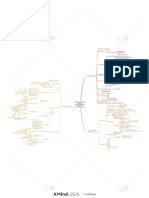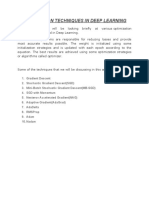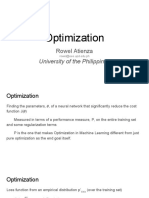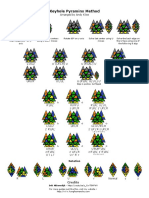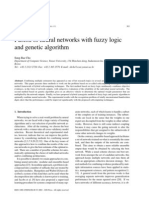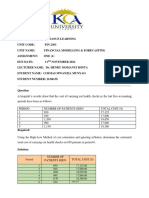0% found this document useful (0 votes)
6 views14 pagesTraining Deep Neural Networks
The document discusses various techniques for training deep neural networks, focusing on initialization strategies like He and Glorot initialization, and the implementation of Batch Normalization to address gradient issues. It also covers several optimization algorithms, including Momentum, Nesterov Accelerated Gradient, AdaGrad, RMSProp, Adam, and Nadam, highlighting their advantages and typical parameter settings. These methods aim to improve the efficiency and effectiveness of training neural networks by addressing issues like vanishing gradients and optimizing learning rates.
Uploaded by
quebuennombredecorreoCopyright
© © All Rights Reserved
We take content rights seriously. If you suspect this is your content, claim it here.
Available Formats
Download as PDF, TXT or read online on Scribd
0% found this document useful (0 votes)
6 views14 pagesTraining Deep Neural Networks
The document discusses various techniques for training deep neural networks, focusing on initialization strategies like He and Glorot initialization, and the implementation of Batch Normalization to address gradient issues. It also covers several optimization algorithms, including Momentum, Nesterov Accelerated Gradient, AdaGrad, RMSProp, Adam, and Nadam, highlighting their advantages and typical parameter settings. These methods aim to improve the efficiency and effectiveness of training neural networks by addressing issues like vanishing gradients and optimizing learning rates.
Uploaded by
quebuennombredecorreoCopyright
© © All Rights Reserved
We take content rights seriously. If you suspect this is your content, claim it here.
Available Formats
Download as PDF, TXT or read online on Scribd
/ 14
